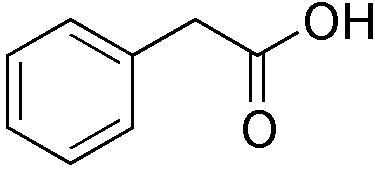Bird’s nest acid, also called sialic acid, sialic acid, scientific name “N-acetylneuraminic acid”, is a naturally occurring carbohydrate. Don’t hesitate to get in contact with us in case you are involved in wholesale sialic acid, we cannot allow you to down. Not only wholesale sialic acid we produced have certificated the worldwide trade normal, but we may also meet your customization wants. RNA viruse tend to have excessive mutation fee-greater than 10.000 instances higher than that of human or viral DNA- and this is true of all of the influenza viruses. Although the very young and elderly are normally at the most risk from influenza, the influenza pandemic of 1918-1919 was unusual in that mortality was high in well being younger adults. All three influenza viruses infect man and trigger illness, but influenza A represents the most serious human pathogen as a result of it causes very massive, recurrent epidemic and even pandemic with significant mortality. Although it’s not clear whether or not a new pandemic is imminent, it would be prudent to take into account the classes we have learned from learning different human and animal influenza viruses. To learn more in regards to Supplier of sialic acid powder as Raw Material for food have a look at our site. Furthermore, reclassification of influenza A viruses indicates that H1N1 viruses circulated from at the very least 1918 until 1957. Thus, it is now clear that influenza pandemics occur at unpredictable intervals.
 The pandemic of 1918 occurred earlier than influenza virus may very well be isolated and it has not been doable to check the virus in the laboratory using fashionable instruments. 1) Cinti S; Pandemic influenza: are we ready? The fast, international spread of pandemic influenza may be a comparatively trendy development related to will increase in population and the expansion of transportation methods necessary for the global transmission of the novel virus. In distinction to measles, smallpox and poliomyelitis, influenza is brought on by viruses that endure continuous antigenic change and that possess an animal reservoir. Recent phylogenetic studies of influenza A viruses have revealed species-specific lineages of viral genes and have demonstrated that the prevalence of interspecies transmission is determined by the animal species. In Florence through the time of the Renaissance, astrologers linked a curious juxtaposition of stars with an outbreak of infection in the town and attributed it to the “influence” of the stars, therefore influenza. Known in the sixteenth century as “the newe Acquayntance”, influenza nonetheless causes main outbreaks of acute respiratory infection. The temperature rises rapidly to around 39 C. Influenza is just not characterized by runny noses or sore throats in the beginning, as are widespread chilly infections. About 80 percent of them are haemagglutinin antigen and the reminders are another antigen, neuraminidase, and have a mushroom-like form.
The pandemic of 1918 occurred earlier than influenza virus may very well be isolated and it has not been doable to check the virus in the laboratory using fashionable instruments. 1) Cinti S; Pandemic influenza: are we ready? The fast, international spread of pandemic influenza may be a comparatively trendy development related to will increase in population and the expansion of transportation methods necessary for the global transmission of the novel virus. In distinction to measles, smallpox and poliomyelitis, influenza is brought on by viruses that endure continuous antigenic change and that possess an animal reservoir. Recent phylogenetic studies of influenza A viruses have revealed species-specific lineages of viral genes and have demonstrated that the prevalence of interspecies transmission is determined by the animal species. In Florence through the time of the Renaissance, astrologers linked a curious juxtaposition of stars with an outbreak of infection in the town and attributed it to the “influence” of the stars, therefore influenza. Known in the sixteenth century as “the newe Acquayntance”, influenza nonetheless causes main outbreaks of acute respiratory infection. The temperature rises rapidly to around 39 C. Influenza is just not characterized by runny noses or sore throats in the beginning, as are widespread chilly infections. About 80 percent of them are haemagglutinin antigen and the reminders are another antigen, neuraminidase, and have a mushroom-like form.
Influenza A viruses have been designated on the idea of the antigenic relationships of the exterior spike haemagglutinin (HA) and neuraminidase (NA) proteins. Type B strains are designated on the identical system, but without H and N numbers since main modifications in these antigens have to date not been observed. These mutations give rise to adjustments within the viral polypeptides, similar to HA which, out of a total of 250 amino acids, undergoes two or three amino-acid substitutions every year. The sequences from these three victims were virtually equivalent and confirmed that the virus belong to strain H1N1. Virus multiplies within the epithelial cells in the nose and sinus passages and destroys the cilia, which are an necessary aspect in the defense of the respiratory system. There are no distinction between Influenza A and B as regards the clinical picture. There are 4 antigens present, the haemagglutinin (HA), neuraminidase (NA), nucleocapsid (NA), the matrix (M) and the nucleocapsid proteins (NP).
 The haemagglutinin (HA) is a rod-formed glycoprotein with a triangular cross-section. In earlier years HA and NA antigens driving from birds and other animals have been given appropriate letters (as an example Hsw for haemagglutinin of a swine -kind virus or Nav for a neuraminidase of avian origin). It was first identified by its capacity to agglutinate erythrocytes, therefore its name, however it’s now obvious that it additionally has essential roles within the attachment and entry of virus to the cells of the host and in determining virulence. Myxo derives from the Greek for mucus and refers to the ability of those viruses to attach to mucoproteins on the cell surface; ortho means true or regular, as in orthodox, and distinguishes these viruses from the Paramyxoviridae (measles is a member of this household). Although laymen check with many incapacitating respiratory infection as “flu”, true influenza is caused by the small household of the Orthomyxoviridae. They’re: Influenza virus A, B and C in addition to Thogoto-like virus which is a tick-borne virus of mammals. Influenza viruses A and B are closely associated, however influenza A infects a wide spectrum of birds and mammals together with people, whereas influenza B infects solely people.
The haemagglutinin (HA) is a rod-formed glycoprotein with a triangular cross-section. In earlier years HA and NA antigens driving from birds and other animals have been given appropriate letters (as an example Hsw for haemagglutinin of a swine -kind virus or Nav for a neuraminidase of avian origin). It was first identified by its capacity to agglutinate erythrocytes, therefore its name, however it’s now obvious that it additionally has essential roles within the attachment and entry of virus to the cells of the host and in determining virulence. Myxo derives from the Greek for mucus and refers to the ability of those viruses to attach to mucoproteins on the cell surface; ortho means true or regular, as in orthodox, and distinguishes these viruses from the Paramyxoviridae (measles is a member of this household). Although laymen check with many incapacitating respiratory infection as “flu”, true influenza is caused by the small household of the Orthomyxoviridae. They’re: Influenza virus A, B and C in addition to Thogoto-like virus which is a tick-borne virus of mammals. Influenza viruses A and B are closely associated, however influenza A infects a wide spectrum of birds and mammals together with people, whereas influenza B infects solely people.



افکارتان را باما در میان بگذارید
برای افزودن دیدگاه باید وارد شوید